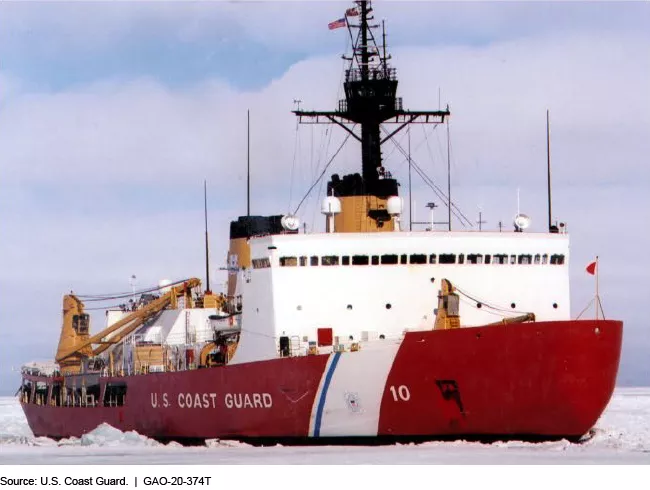Issue Summary
Climate change has led to record low levels of Arctic ice—expanding economic opportunities as well as environmental and safety risks. As Arctic waterways become more accessible, the region has attracted increased shipping activity in the U.S. Arctic (which includes the Bering Strait and regions surrounding Alaska), and greater international competition for its economic opportunities. At the same time, climate change has created challenges for the people living in the Arctic and the ecosystems upon which many of them rely.
Federal agencies play a variety of roles in supporting and protecting Arctic activities.
For instance:
- Environmental threats. Over 70 out of 200 Alaska Native villages face significant threats from erosion, flooding, or thawing permafrost. Federal agencies provided $391 million during FYs 2016-2020 to repair damaged infrastructure in Alaska Native villages and build their resilience to environmental threats. However, more than one-third of highly threatened Native villages did not receive such federal assistance during these 5 years. An intergovernmental coordinating entity could help target federal investments in the region.
Erosion-Damaged Road in the Native Village of Shishmaref
Image

- Arctic risks. The Coast Guard has assessed evolving risks in the region—including geopolitical tensions and climate change—and has taken steps to manage them. For example, it deployed ships to the area and participates in training exercises. However, the Coast Guard hasn't fully tracked the time spent on its Arctic activities. Complete information would help the Coast Guard better allocate its constrained resources and assess its progress toward achieving its Arctic strategic goals.
- U.S. priorities. Management roles for advancing U.S. Arctic priorities span the federal government. U.S. and foreign stakeholders identified factors that may help advance U.S. priorities, such as creating a new Ambassador for the Arctic region and providing scientific and other expertise at the Arctic Council—a forum that promotes cooperation among Arctic countries. But stakeholders also noted that challenges in interagency coordination and other areas may make some U.S. priorities harder to achieve.
- Coast Guard ships. As more navigable ocean water emerges in the Arctic and human activity increases, the Coast Guard expects to face expanding responsibilities in the region. Icebreaking vessels can ensure year-round access to the Arctic—which is critical to protecting U.S. economic and national security interests. However, the Coast Guard’s only operating heavy polar icebreaker, the Polar Star, is near the end of its service life. To address this gap, the Coast Guard is partnering with the Navy to procure three heavy polar icebreakers, known as Polar Security Cutters. The Coast Guard plans to invest at least $11.6 billion for acquisition, operations, and maintenance of these cutters. However, the design of the Polar Security Cutters is not yet mature, which has led to an extended design phase and contributed to a 3-year schedule delay.
Coast Guard’s Heavy Polar Icebreaker, the Polar Star
Image







